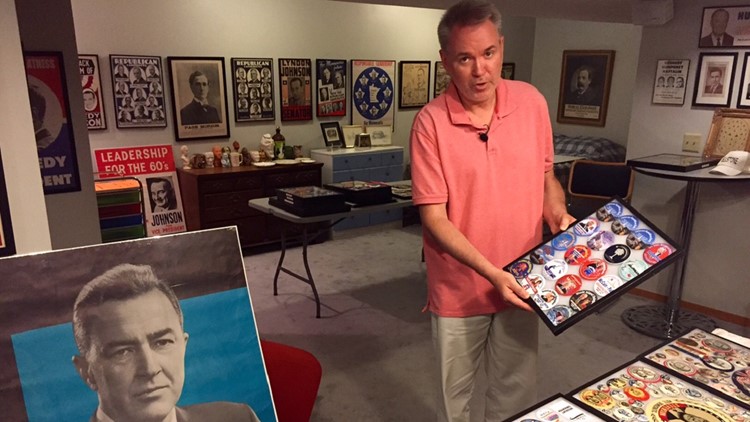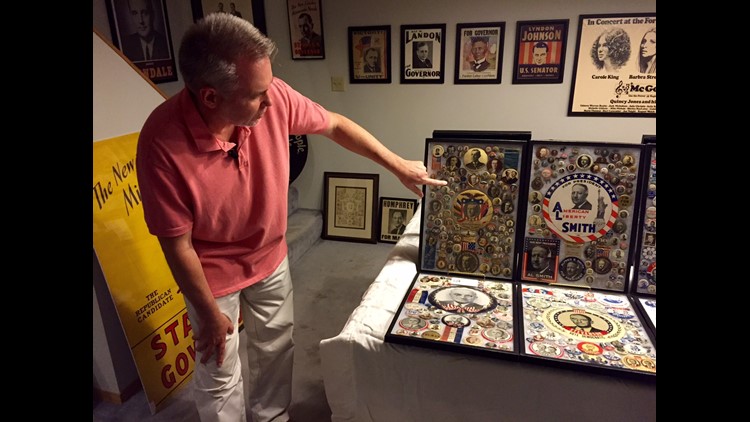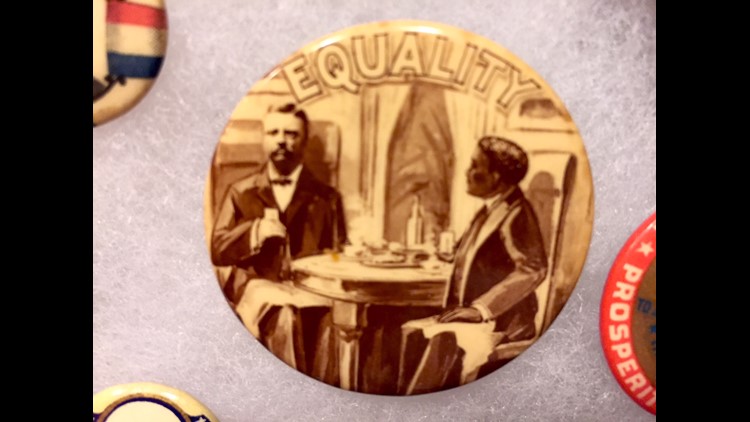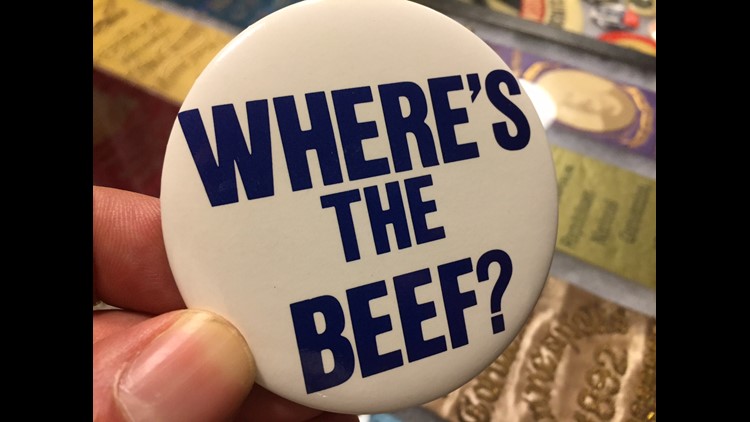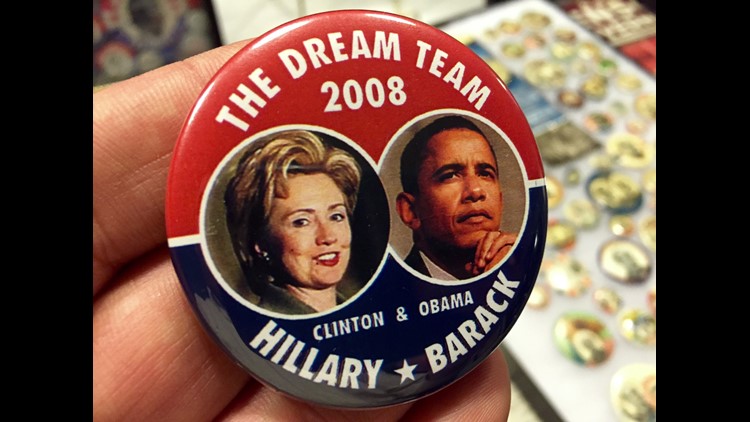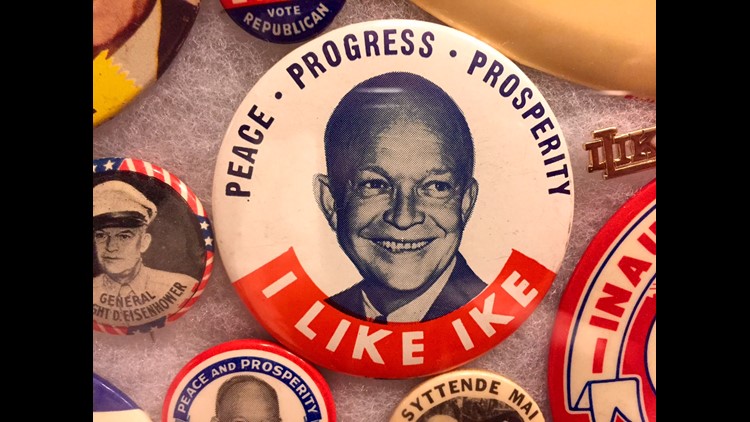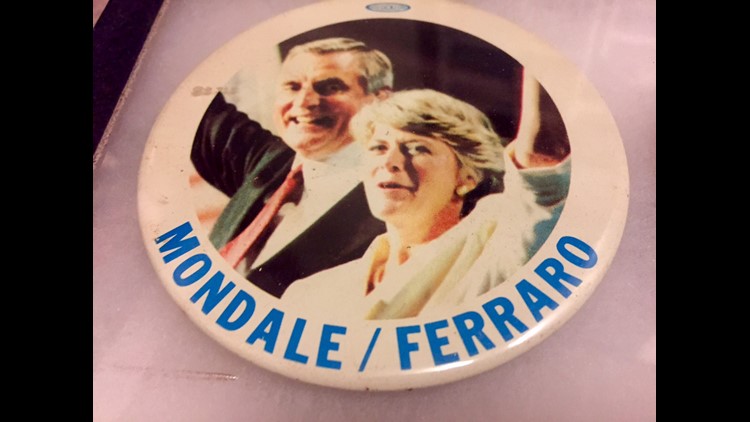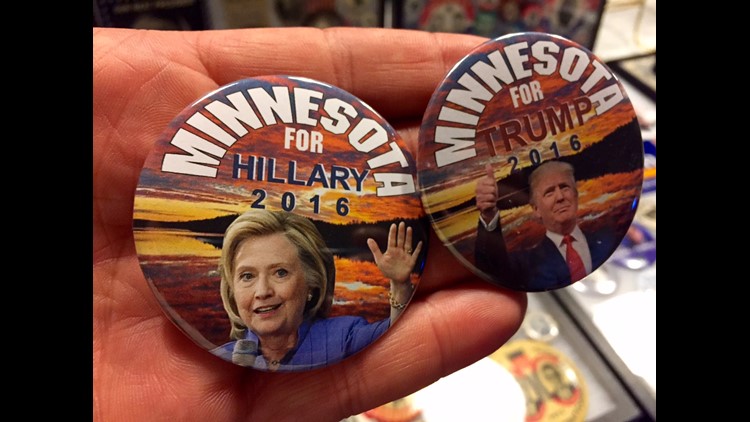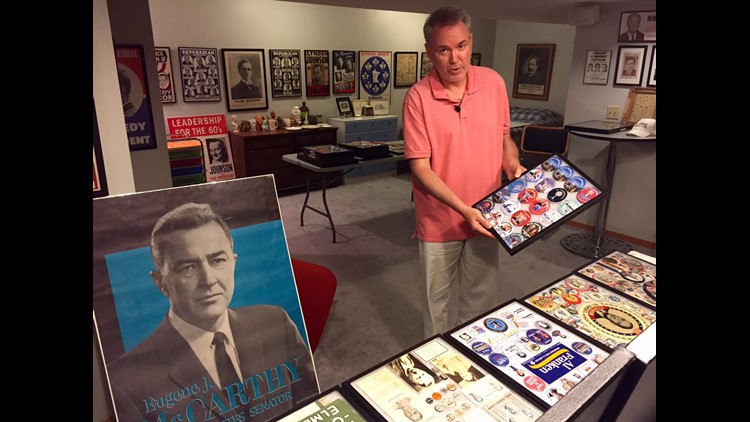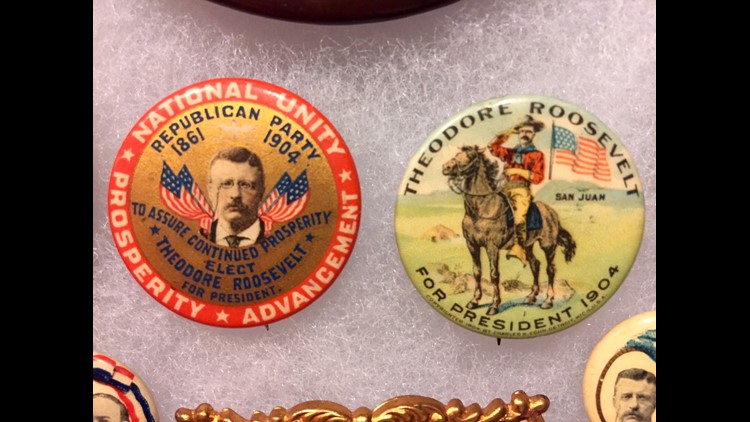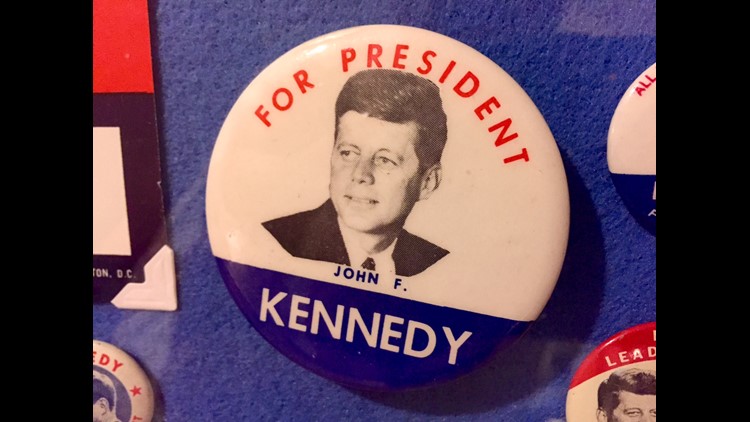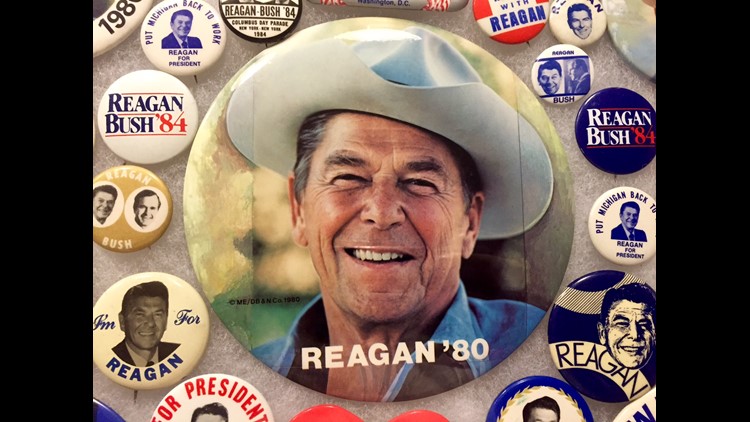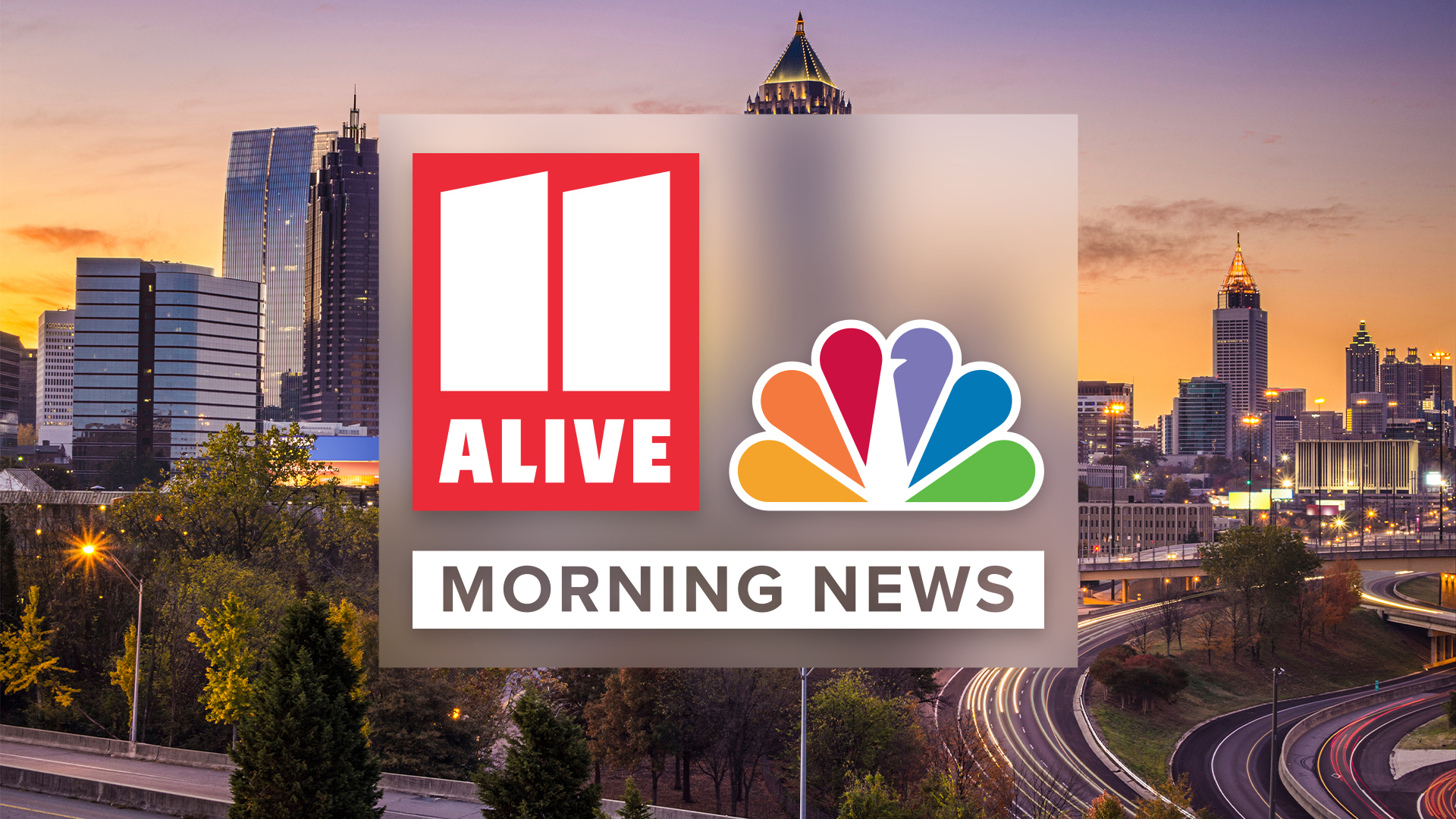EDEN PRAIRIE, Minn. - As speakers deliver their messages at the Republican and Democratic National Conventions, Paul Bengston’s eyes are drawn elsewhere on his TV screen.
“That’s all I’m looking at,” he laughs.
The messages Bengston covets are printed on buttons pinned to the hats and lapels of convention delegates. If history is any guide, some of those buttons will soon be in Bengston’s massive collection.
Bengston is Minnesota’s most prolific collectors of political trinkets. Over five decades, he’s assembled more than 40,000 buttons, posters and assorted other campaign souvenirs.

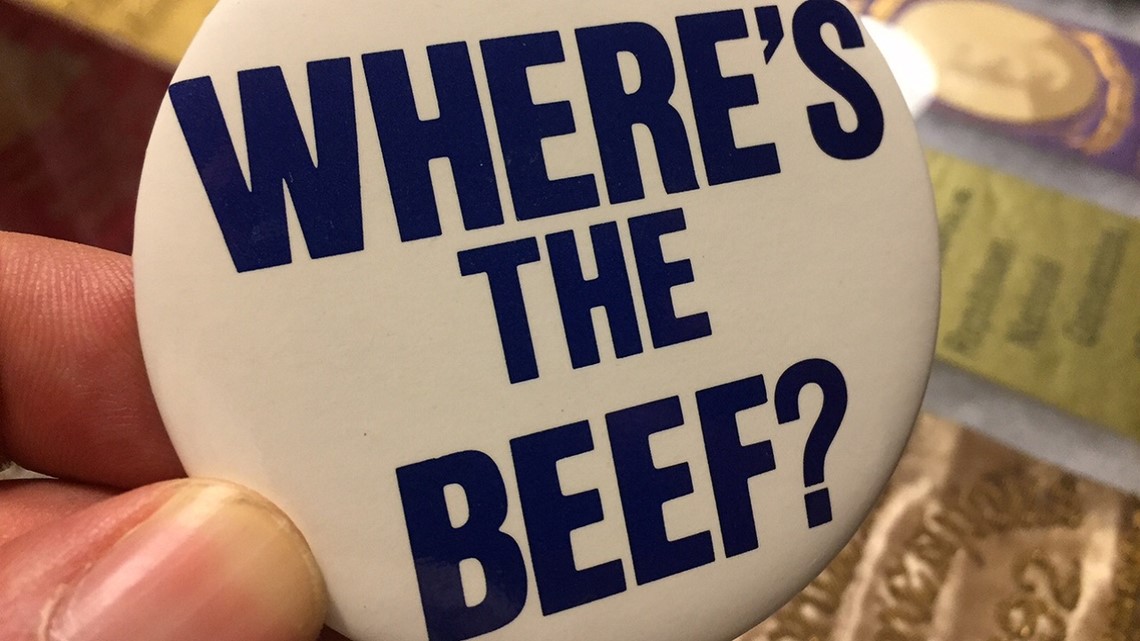
“I was seven years old when I started,” Bengston says.
His first purchase? A Hubert Humphrey button Bengston bought for 50 cents during Humphrey’s failed campaign for president in 1968.
Bengston was hooked.
“When we’d go on vacations, my parents, anytime they’d see an antique shop they’d pull over and I’d run in,” he says.
By college, Bengston was taking road trips in search of buttons. “I would get up on a Saturday morning, drive to Mankato, Red Wing, Duluth - hit every antique shop, then do it again three weeks later.”
This summer Bengston is eyeing the new crop of convention buttons, with a deep appreciation of those that came before.
“I think there’s something about people who want a souvenir,” he says. “We want something to take home to remember that by. And thankfully some people never throw that stuff away.”
Which is why Bengston has been able to amass an encyclopedia’s worth of American history – on buttons.

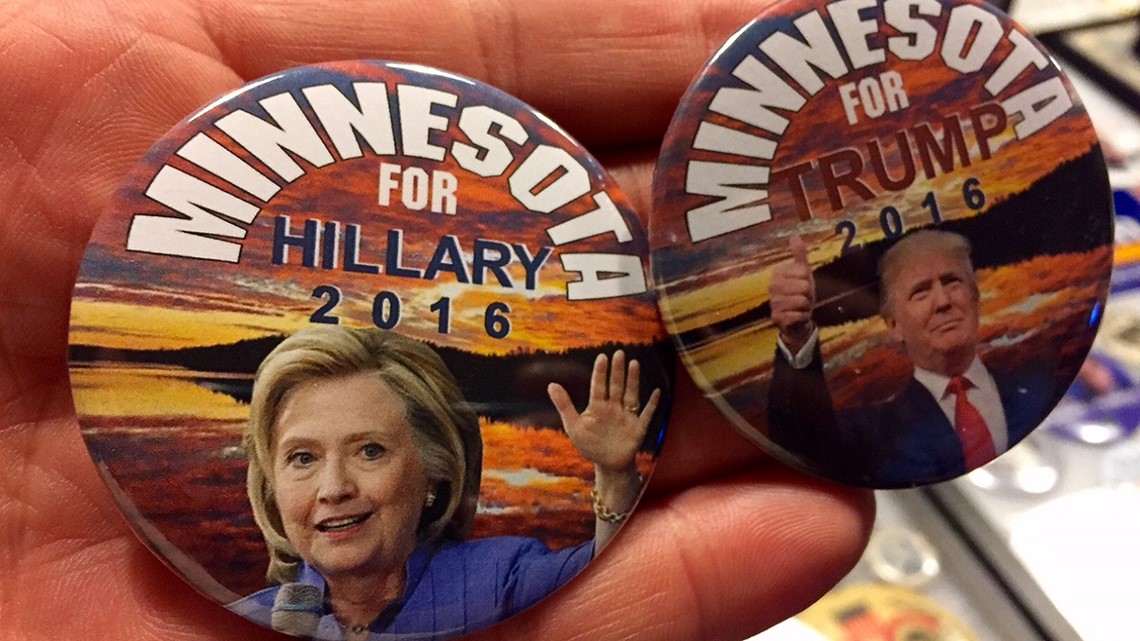
“You’ve got Teddy Roosevelt’s visit to the Minnesota state fair in 1910,” says Benston, holding up a souvenir button from the speech at which Roosevelt first uttered the words, “Speak softly and carry a big stick.”
Bengston’s favorite button depicts a White House meeting between Teddy Roosevelt and Booker T. Washington.


“It was a huge scandal, especially in the south, that the president, Teddy Roosevelt, had invited a black man to dine at the White House,” says Bengston. “And now we’ve got a black president.”
Woodrow Wilson’s push for an eight hour work day, and against the county’s entry into World War I, are depicted on buttons from that time period. Bengston says the stories behind such buttons have helped make him a lifelong student of American history.
They’ve also given him perspective. Many Americans assume the negativity in today’s political campaigns is a symptom of our times. Yet Bengston pulls out buttons that suggest otherwise.

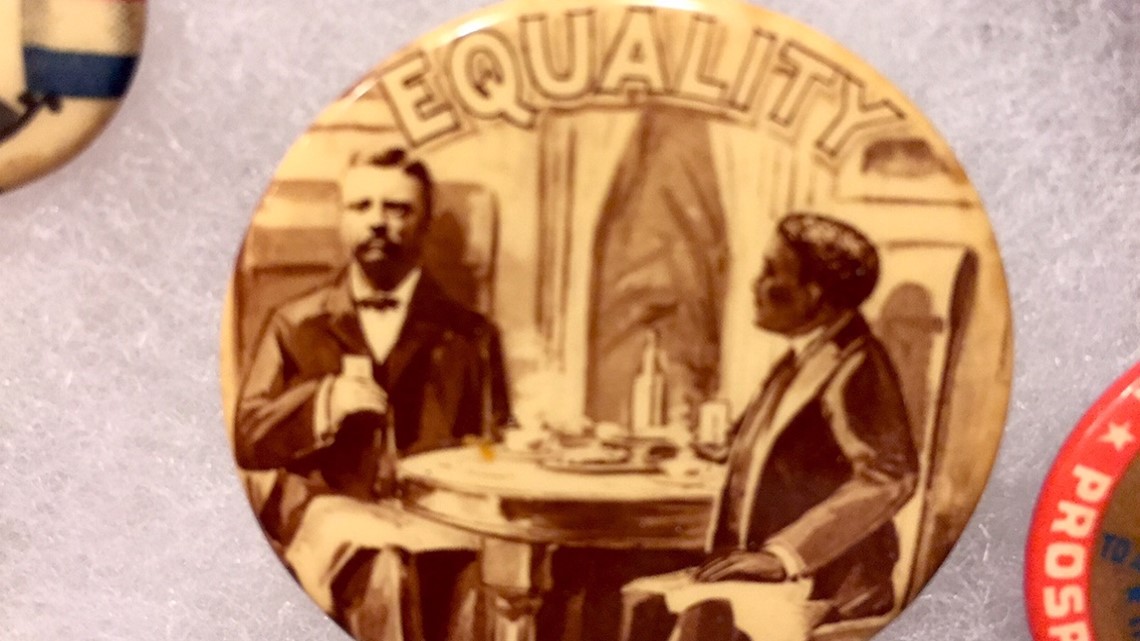
“We don’t want Eleanor either,” says a button referencing the wife of Franklin Roosevelt. Another calls into question a military promotion received by Roosevelt’s son. “I want to be a captain too,” the button reads.
Another anti-Roosevelt button simply says, “I hate wah.”
“That’s how Franklin Roosevelt pronounced war,” Bengston says. “They’re making fun of his accent.”
Pop culture has also influenced political buttons. “Sock it to me Bobby,” reads a button in Bengston’s collection, referencing Robert Kennedy and a reoccurring catchphrase on the TV show Laugh-In.
“The events that are going on almost always end up on a button somehow,” says Bengston.
True again when Walter Mondale borrowed “Where’s the beef?” from a Wendy’s commercial and emblazoned it on buttons, calling into question policies being advanced by Ronald Reagan. Catchy button, but unsuccessful. Reagan won the election in a landslide.

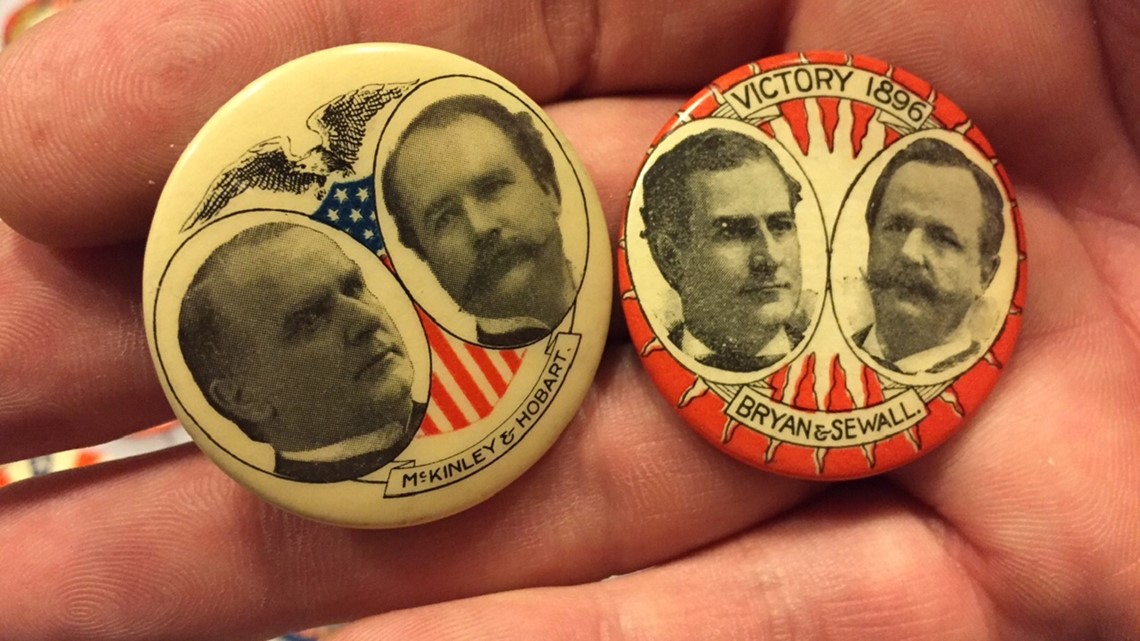
Bengston says the surest way to increase a button’s value is to get your candidate elected. Those presidents elevated by history to greatness, also see the value of their buttons increase.
Good news for Franklin Roosevelt and Ronald Reagan, but bad for hard charges like Bernie Sanders and Ross Perot who ultimately come up short.
“Right now Bernie Sanders buttons are hot,” Bengston says. But so was Perot in his day. Bengston points to a Perot button in his collection. “Back in the 90s this was selling for 20, 30, 40 bucks, and now I get it on eBay for two bucks.”

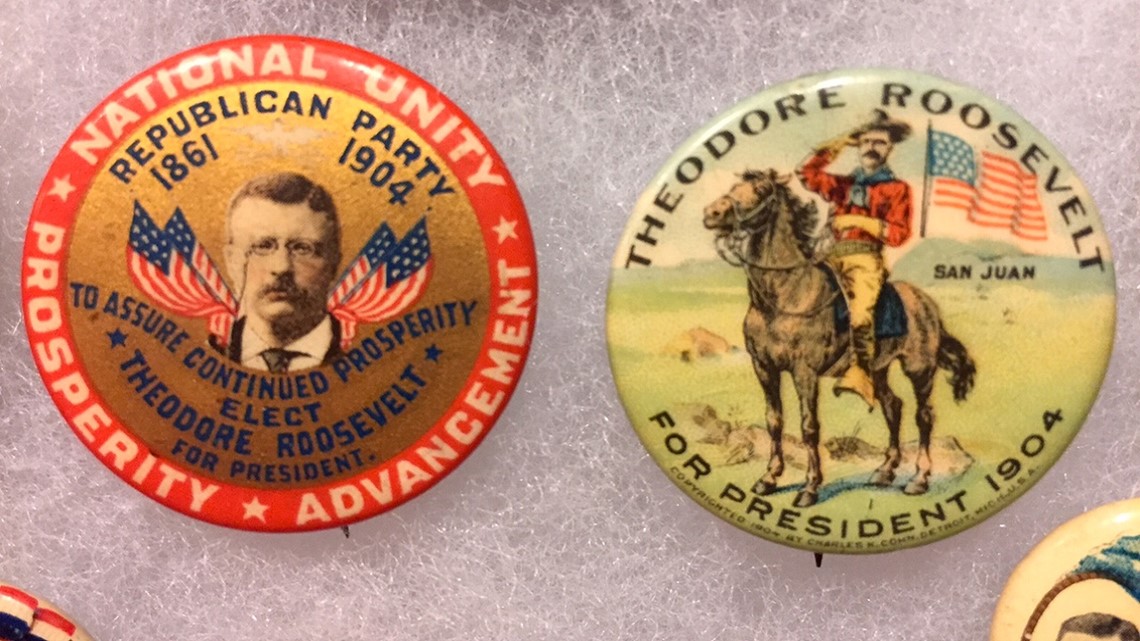
Some buttons in Bengston’s collection are worth more than $10,000. The most valuable he keeps in safe deposit boxes.
Ribbons carried political messages before button technology emerged in time for the 1896 presidential campaign between William McKinley and William Jennings Bryan.
Bengston says buttons became a national phenomenon. “Just like Beanie babies, everybody wanted buttons.”
Not unlike what’s happening today with memes on social media. “As a matter of fact, there’s people now that are collecting these memes. They’re dragging it into a folder,” says Bengston, “and they’ll tell a history too.”
In this rancorous political season, Bengston and his buttons offer good perspective.
“It’s just the latest chapter. We will survive this election and we will go on,” the collector says. “Everything works out. Always has.”


